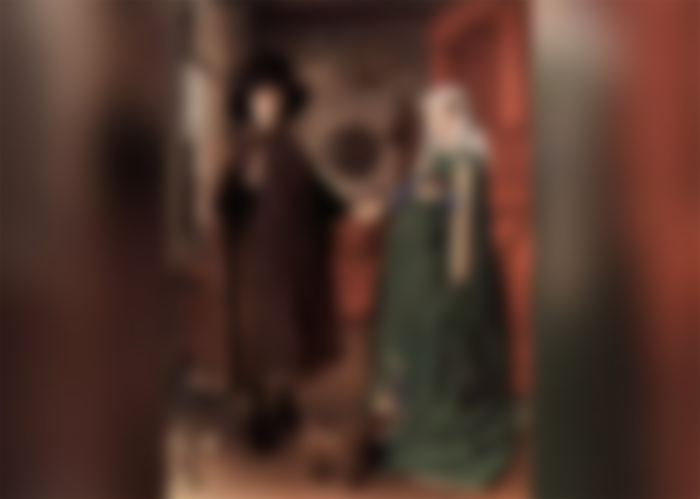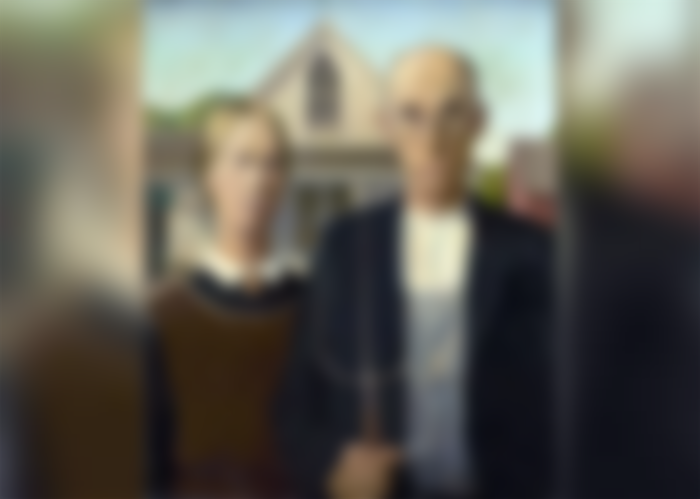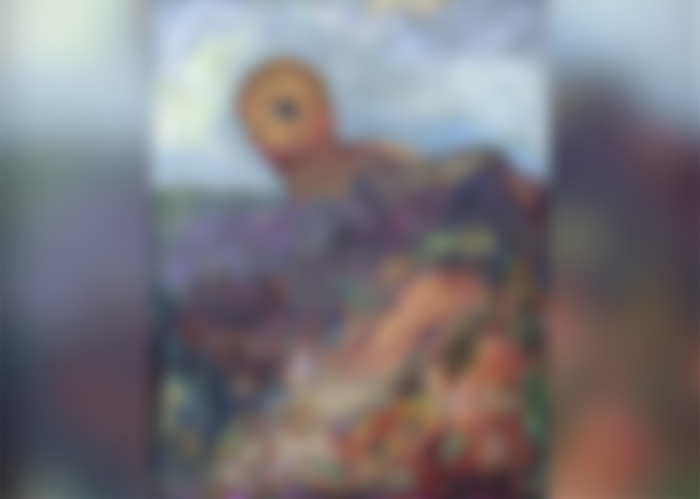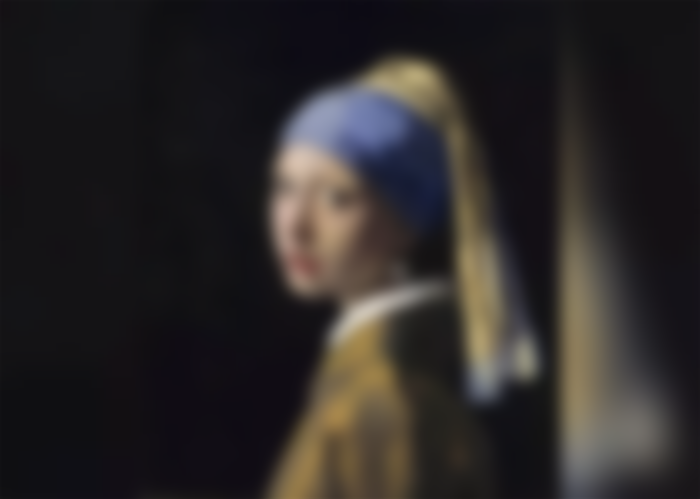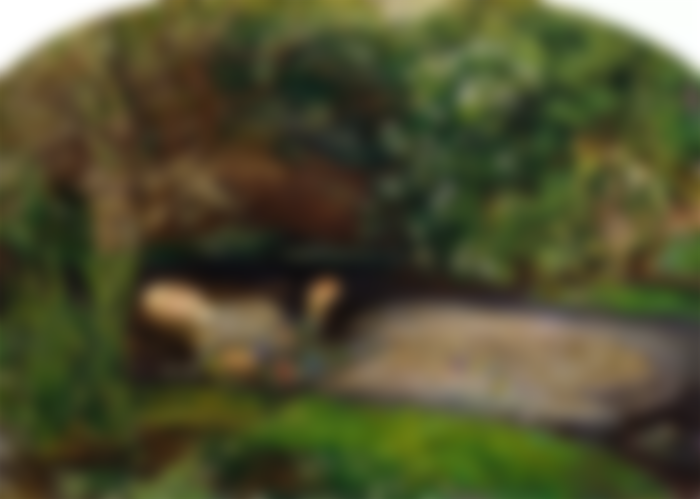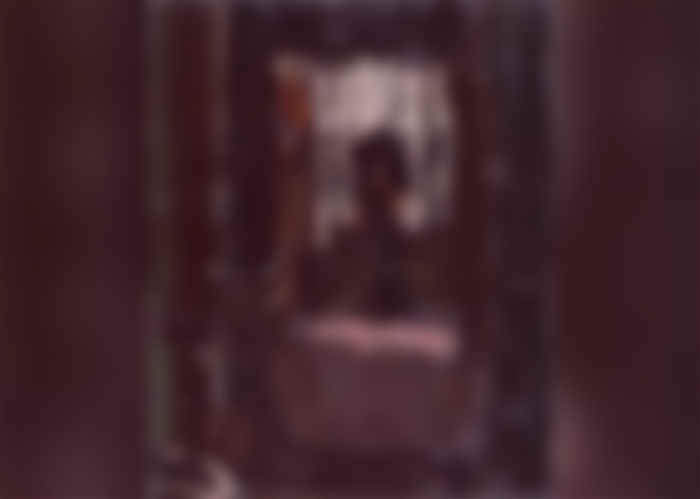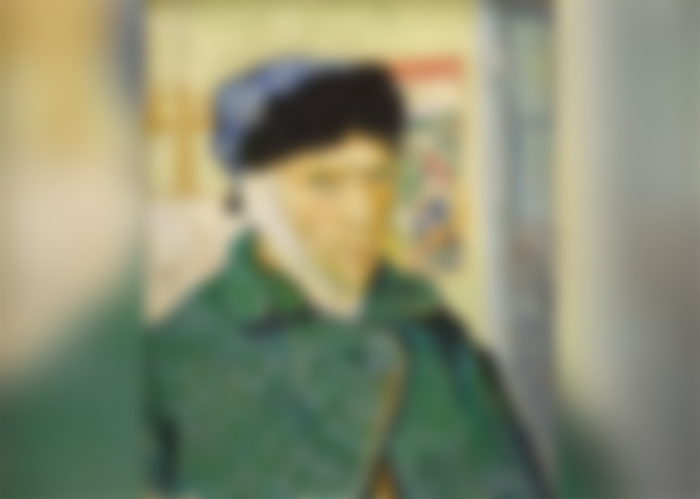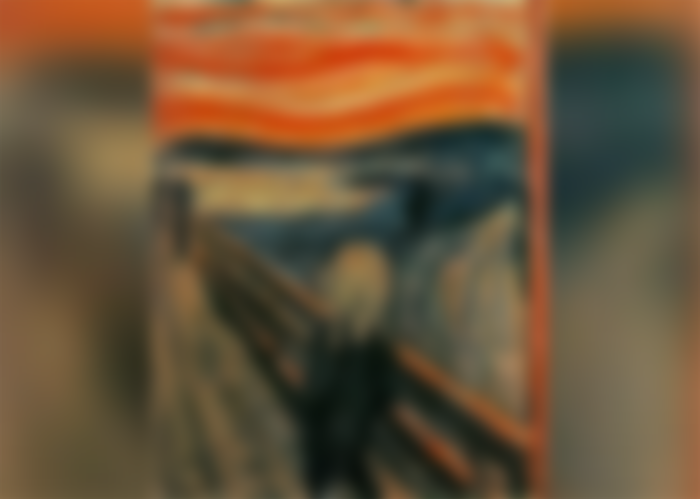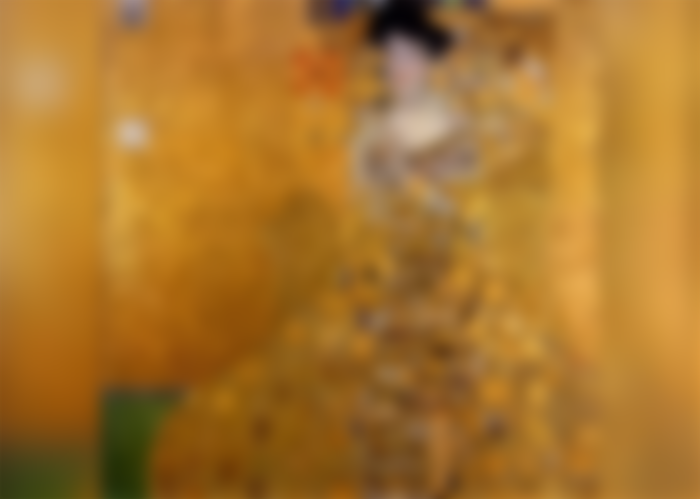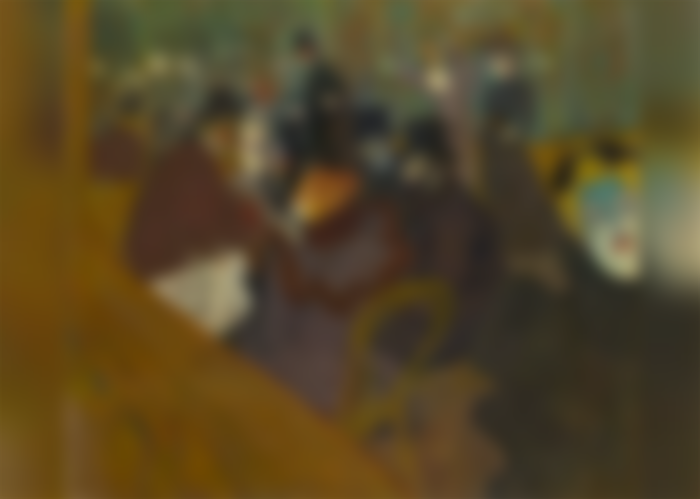20 famous paintings and the stories behind them
picture is worth a thousand words, and like texts, art is often meant to be “read” through critical deconstruction. Paintings can be far more complicated than they appear at first glance and difficult to decipher if the viewer doesn’t speak the same tongue. Iconography—the symbolic language of a given work of art—can be sophisticated and complex, reflecting the collective consciousness or drawn from the artist’s personal experience. Why would someone eschew the written word in favor of paint and canvas? 20th-century American artist Edward Hopper appears to have had the answer. “If I could say it in words,” he said, “there would be no reason to paint.”
The stories told by works of art—and about them—are, quite literally, the stuff of novels. Johannes Vermeer’s “Girl with a Pearl Earring” inspired the novel of the same name by author Tracy Chevalier. The book was subsequently turned into a film starring Scarlett Johansson. Almost 40 years after Irving Stone wrote his biographical account of the life of Michelangelo, Dan Brown’s “The Da Vinci Code” turned the life and work of the Renaissance master into a romp through the preceding millennia.
September 2019 heralded the wide cinematic release of the latest exponent of the genre: “The Goldfinch,” based on Donna Tartt’s Pulitzer Prize-winning novel. The book centers around the fictionalized theft of Dutch artist Carel Fabritius’ eponymous painting after an explosion rocks New York’s Metropolitan Museum of Art. Ironically, Fabritius died in a devastating gunpowder explosion in 1654, shortly after completing his most memorable work. The success enjoyed by Tartt’s book elevated “The Goldfinch” to rock star status, mobbed by crowds determined to catch a glimpse of the tiny bird tethered by a delicate chain. [Note: Fabritius’ painting is not featured in Stacker’s gallery.]
Stacker curated this list of some of the world’s most famous images and the fascinating stories behind them. Scroll through the list and find out which paintings scandalized Paris, were looted by the Nazis, and inspired a hit Broadway musical.
1:

Christina’s World
- Artist: Andrew Wyeth
- Year: 1948
“Christina’s World” continues to fascinate more than 70 years after it was first painted. The faceless woman lying on the ground was Anna Christina Olson, the neighbor and muse of Pennsylvania artist Andrew Wyeth. While the painting has all the hallmarks of a pastoral, Olson’s pose is not one of romantic languor; she suffered from a muscle-wasting disorder—possibly Charcot-Marie-Tooth disease—and was known to drag herself across the family homestead.
2:

Arnolfini Portrait
- Artist: Jan van Eyck
- Year: 1434
Painted by Dutch master Jan van Eyck, this early Netherlandish panel painting is shrouded in symbolism. The elegantly dressed couple are thought to be Giovanni di Nicolao di Arnolfini, and his wife, Costanza Trenta, wealthy Italians living in Bruges. The unusual composition begs several questions. Does the painting celebrate the couple’s wedding, or commemorate some other event, such as a shrewdly negotiated marriage contract? Was the bride pregnant, or simply dressed in the latest fashion? And what are the mysterious figures depicted in the convex mirror? The unorthodox placement of van Eyck’s signature directly above it suggests one of the men may be the artist himself.
3:

American Gothic
- Artist: Grant Wood
- Year: 1930
Grant Wood spent years searching for inspiration in Europe. The work that would make him famous, however, was painted after his return to the heartland. A national icon and leading exponent of regionalism, “American Gothic” depicts what appears to be a Depression-era farmer and his weathered wife. Grant intended the couple to represent father and daughter; in reality, they were neither. The man holding the pitchfork was Wood’s dentist, Byron McKeeby, flanked by the artist’s sister, Nan Wood Graham.
4:

Cyclops
- Artist: Odilon Redon
- Year: 1914
For those not familiar with the finer points of Greek mythology, the dream-like subject of Odilon Redon’s “Cyclops” may not be easily identifiable. Polyphemus, the giant that is sporting the solitary eyeball, peers over a rocky outcropping at the object of his desire—the nymph Galatea. Derived from Homer’s “Odyssey,” the tale was a popular trope among French symbolists, including Redon’s contemporary, poet and painter Gustave Moreau.
5:

Frescoes, Villa of the Mysteries
- Artist: Unknown
- Year: c. first century B.C.
In 1909, archeologists working in the ancient Roman city of Pompeii unearthed a villa buried under 30 feet of volcanic ash. Preserved inside was a room, measuring approximately 225 square feet, containing a series of beautiful yet baffling frescoes. The images depict more than two dozen, life-size figures. At the center of the activity is a clothesless woman, shown flogged in one scene while dancing and playing the cymbals in another. Most scholars concur that the cycle represents a Dionysian initiation cult.
6:
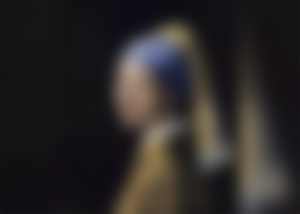
Girl with a Pearl Earring
- Artist: Johannes Vermeer
- Year: 1665
A masterpiece of the Dutch Golden Age, Vermeer’s “Girl with a Pearl Earring” has transfixed viewers with her wistful gaze ever since the painting resurfaced in the late 19th century. Little, however, is known about the young woman who modeled for the portrait. It has been suggested that the girl was Vermeer’s daughter or mistress. While this may be the case, the image wasn’t intended to represent an actual person. The turban worn by the sitter indicates that the piece was intended as a “tronie,” an idealized image cloaked in exotic clothing.
7:

Ophelia
- Artist: Sir John Everett Millais
- Year: 1851-52
Pre-Raphaelite John Everett Millais, in true Pre-Raphaelite fashion, painted directly from life whenever possible. Much of the exuberant foliage found in “Ophelia” can be found in Shakespeare’s “Hamlet” and was painted en plein air. Millais, however, didn’t subject his 19-year-old model, Elizabeth Siddall, to the elements; she reportedly posed for the artist in a bathtub full of water in his London studio.
8:

Christ in the Storm on the Sea of Galilee
- Artist: Rembrandt van Rijn
- Year: 1633
Purchased by art enthusiast Isabella Stewart Gardner in 1898, Rembrandt’s only painted seascape occupied a place of prominence in the Boston museum Gardner erected in her name until March 18, 1990, when it was stolen, along with over a dozen important works valued at approximately half a billion dollars. Although the finger has frequently been pointed at now-deceased Boston career criminal Whitey Bulger, the thieves have never been caught, and the whereabouts of the missing artwork remains unknown.
9:

Jack the Ripper’s Bedroom
- Artist: Walter Sickert
- Year: 1908
Walter Sickert, noted for his moody portraits and dimly lit domestic interiors, may have harbored a secret darker than his paintings. It has been argued that disconcerting works such as “Jack the Ripper’s Bedroom” and “The Camden Town Murder” may reflect some connection between the artist and the grisly Whitechapel butcher—either as an accomplice or the murderer himself.
10:
[bad iframe src]
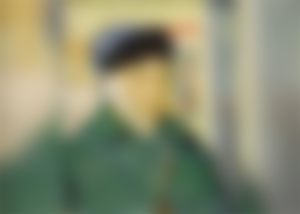
Self-Portrait with Bandaged Ear
- Artist: Vincent van Gogh
- Year: 1889
Vincent van Gogh is famous for having severed his own ear; the strained relationship with fellow post-impressionist Paul Gauguin that precipitated the artist’s self-mutilation is not nearly as well known. Van Gogh spent 1888 working in the South of France and was joined in October of that year by Gauguin. Their friendship deteriorated, and van Gogh didn’t react well to the news of Gauguin’s impending departure. The troubled artist cut off his ear, wrapped in newspaper, and reportedly gave it to a local prostitute for safekeeping. “Self-Portrait with Bandaged Ear” depicts van Gogh in his studio, with the right side of his head wrapped in cloth. In fact, it was a portion of van Gogh’s left ear that was removed, with the inconsistency in the painting arising from the inverted reflection perceived by the artist while gazing in the mirror.
11:

Guernica
- Artist: Pablo Picasso
- Year: 1937
An enormous, shifting mass of distorted, agonized figures, Pablo Picasso’s “Guernica” was the artist's personal response to the horrific bombing inflicted by the Germans on the tiny Basque town in 1937. Exhibited at the Exposition Internationale des Arts et Techniques dans la Vie Moderne the same year, the painting was a plea for peace in an age of brutal conflict—both the Spanish Civil War and the dawn of World War II. Picasso expressly forbid the exhibition of his masterwork in Spain until the country became a republic. While his homeland never met that demand, the painting was seen—behind bullet-proof glass—at the Prada in Madrid in 1981, six years after the death of dictator Francisco Franco.
12:

The Scream
- Artist: Edvard Munch
- Year: 1893
Popularly known as “The Scream,” Norwegian artist Edvard Munch’s expressionist masterpiece is frequently interpreted as a primal response to the excessive pressures of modern life. Originally titled “The Shriek of Nature,” the image was created with an entirely different intent, as related by Munch himself, “One evening I was walking along a path, the city was on one side and the fjord below. I felt tired and ill. I stopped and looked out over the fjord—the sun was setting, and the clouds turning blood red. I sensed a scream passing through nature; it seemed to me that I heard the scream. I painted this picture, painted the clouds as actual blood. The color shrieked.” The iconic painting was stolen from the Oslo National Gallery in 1994; the culprit was apprehended and the painting recovered several months later. Ironically, a 1910 version of “The Scream” was taken in broad daylight from the Munch Museum in 2004. It, too, was eventually recovered despite fears it had been destroyed.
13:

Portrait of Adele Bloch-Bauer
- Artist: Gustav Klimt
- Year: 1907
One of a handful of paintings seized by the Nazis from the family home of Ferdinand Bloch-Bauer, this glittering portrait by fin-de-siecle artist Gustav Klimt depicts the Viennese sugar magnate’s wife—art enthusiast and society hostess Adele Bloch-Bauer. After the war, the portrait turned up in the state-run Galerie Belvedere. Maria Altmann, Adele’s niece, spent years fighting for the painting’s return, finally triumphing in 2006. The incredible story was made into a film, “Woman in Gold,” starring Helen Mirren as Altmann. Both patron and muse, Bloch-Bauer is the only sitter Klimt painted twice.
14:

Lascaux Cave Paintings
- Artist: Unknown
- Year: c. 15,000–17,000 B.C.
In 1940, 18-year-old Marcel Ravidat opened a window to the distant past when he fell into a hole while out walking with his dog in the Dordogne region of France. The hole led to a cave covered with approximately 6,000 Paleolithic images depicting animals, enigmatic symbols, and a lone human form. The purpose of the paintings, created with mineral pigments and charcoal, is obscure but may be linked to some sort of ceremonial rite.
15:

[bad iframe src]
Primavera
- Artist: Sandro Botticelli
- Year: 1477–1482
Christened “Primavera” by pioneering art historian Giorgio Vasari in 1550, Boticelli’s mysterious masterwork originally lacked a title. Although its precise meaning remains enigmatic, “Primavera” is an allegorical work inspired by classical mythology, depicting the transformation of the nymph Chloris into Flora, the goddess of spring. Commissioned by a member of the powerful Medici clan, it has been suggested that figures in the composition were modeled on members of the family.
16:

Portrait of Madame X
- Artist: John Singer Sargent
- Year: 1883–84
John Singer Sargent’s moody portrait of Virginie Avegno Gautreau, the American wife of a French banker, outraged critics when it was first exhibited at the Paris Salon 1884. Sargent had hoped the portrait would make his career. The painting, however, set off a scandal of such magnitude that Sargent exiled himself to England. What was it that had so offended Parisian high society? While the image’s overt sexuality was expected for a mythological heroine and tolerable for a prostitute moonlighting as an artist’s model, it was downright threatening when applied to a woman of their own cast.
17:

Untitled
- Artist: Jean-Michel Basquiat
- Year: 1982
Jean-Michel Basquiat’s meteoric rise from Brooklyn graffiti artist to critically acclaimed painter is the stuff of legend. The youthful Neo-expressionist lived hard and died at the tender age of 27 from a heroin overdose. In December 2018, one of Basquiat's untitled works set a record at Sotheby’s, selling for a $110.5 million. The staggering selling price spurred the owner of another Basquiat painting to have the work authenticated. An ultraviolet light examination revealed that the painting included elements drawn by Basquiat in invisible ink.
18:

Flaming June
- Artist: Sir Frederic Leighton
- Year: 1895
“Flaming June,” of the languid beauty in the transparent orange dress, was painted by esteemed British artist Frederic Leighton at the close of the 19th century. The painting disappeared soon after, only to reemerge in the early 1960s when it was supposedly discovered in a chimney by a laborer working at a construction site. Considered highly unfashionable at the time, the painting failed to make reserve when it came to auction. It was acquired soon after by Puerto Rico’s Museo de Arte de Ponce, where it remains to this day.
19:

At the Moulin Rouge
- Artist: Henri de Toulouse-Lautrec
- Year: 1892–95
Born to wealth and privilege, Toulouse-Lautrec abandoned his aristocratic roots in favor of the working-class Montmartre district and its colorful nightlife. The artist appears to have been afflicted with a genetic disorder affecting growth and bone development; he walked with a cane and reached an adult height of just 4 feet, 8 inches tall. Taunted for his physical appearance, he self-medicated with alcohol, notably absinthe. “At the Moulin Rouge” depicts the world in which Toulouse-Lautrec felt most at ease. In addition to entertainers such as red-headed chanteuse Jane Avril and dancer May Milton (with the verdigris-tinted complexion), the piece also includes a self-portrait of the artist in the company of his cousin, Gabriel Tapié de Céleyran.
20:

The Ambassadors
- Artist: Hans Holbein the Younger
- Year: 1533
The most in-demand portrait painter of his era, Hans Holbein spent a considerable amount of time at the court of Henry VIII. “The Ambassadors” depicts Jean de Dinteville, the French ambassador to England, and his friend, George de Selve, both in their late 20s; de Selve, the bishop of Lavaur, served as ambassador to both the Holy Roman emperor and the pope.
The painting is scattered with allegorical components, including a lute with broken strings—perhaps symbolic of Henry VIII’s break with Rome so that he could divorce Catherine of Aragon and marry his mistress, Anne Boleyn. The blurry, black-and-white object that bisects the bottom of the composition is, in fact, a human skull, representing mortality. Striking use of anamorphosis, it can only be viewed from an acute angle, forcing observers to view the painting from a variety of perspectives.

